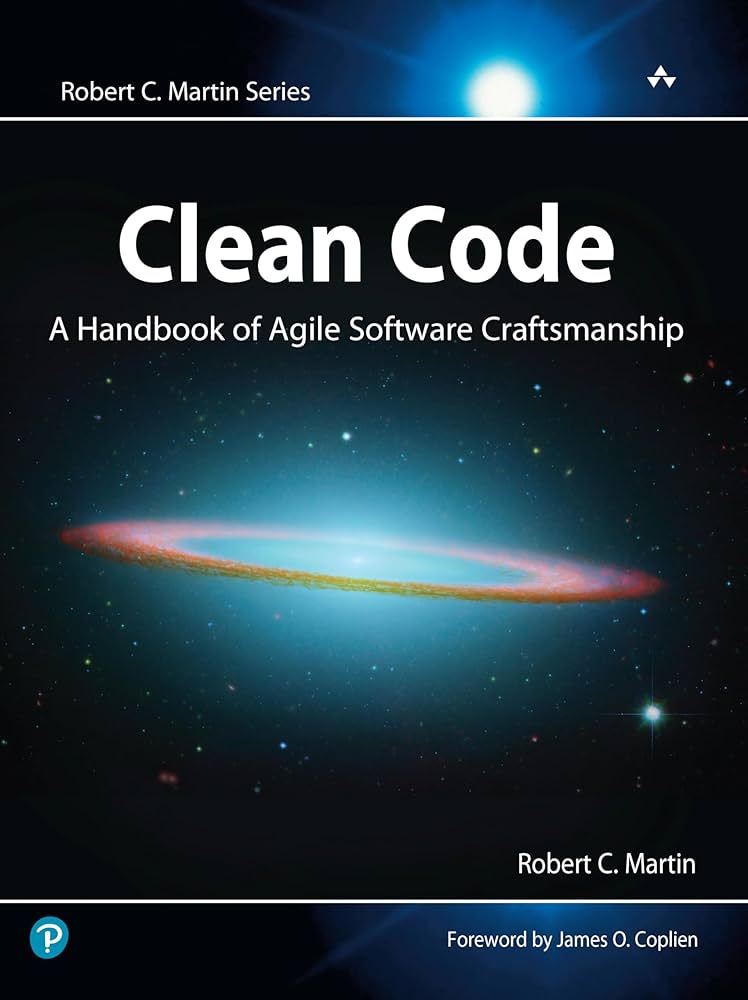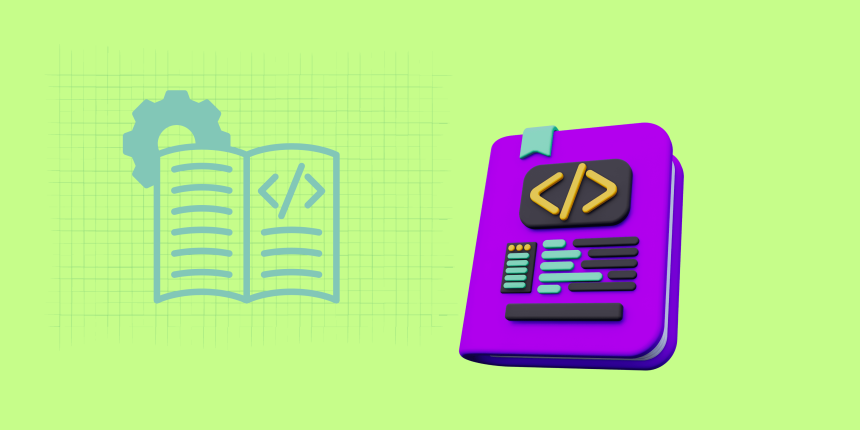In the ever-evolving world of programming, staying up-to-date with the latest concepts and best practices is crucial for success. The best books for programmers offer invaluable insights into software development, algorithms, and coding techniques. These resources can help both beginners and experienced developers enhance their skills and knowledge in various areas, including testing, security, debugging, and project management.

This article presents a curated list of 10 must-read books for programmers in 2024. From classics like “Clean Code” and “Design Patterns” to comprehensive guides on JavaScript and data structures, these books cover a wide range of topics essential for modern software engineering. Whether you’re looking to improve your coding skills, learn about DevOps, or master front-end development, these books provide the knowledge and guidance to help you become a better programmer and advance your career in the field.
Clean Code: A Handbook of Agile Software Craftsmanship

Image Source: Amazon.com
“Clean Code: A Handbook of Agile Software Craftsmanship” by Robert C. Martin is a cornerstone text for programmers aiming to enhance their coding skills. This book delves into the principles of writing code that is not only functional but also maintainable and scalable.
Clean Code key principles
The book emphasizes several key principles for creating clean code. It stresses the importance of meaningful names, small functions that do one thing well, and the avoidance of duplication. Martin argues that clean code should be readable and easy to understand, likening it to well-written prose. He encourages developers to write code that clearly expresses its intent, making it easier for others to read and modify.
Clean Code practical applications
In practice, clean code principles can significantly impact software development. By following these guidelines, developers can create more efficient, bug-free code that is easier to maintain and extend. The book provides numerous examples and case studies, demonstrating how to transform “dirty” code into clean, elegant solutions. This hands-on approach helps readers apply the concepts to their own projects, improving overall code quality.
Clean Code impact on software quality
The impact of clean code on software quality is substantial. It leads to reduced maintenance costs, as clean code is easier to understand and modify 1. Moreover, it enhances collaboration among team members, as clear and consistent code facilitates better communication. Clean code also contributes to improved reliability and efficiency, resulting in software that is more robust and performs better over time.
The Pragmatic Programmer: Your Journey to Mastery

Image Source: Amazon.in
“The Pragmatic Programmer” by Andy Hunt and Dave Thomas is a cornerstone text for software developers seeking to enhance their skills and approach to coding. This book goes beyond specific languages or frameworks, focusing on the philosophy of pragmatic programming.
Pragmatic Programmer core concepts
The book emphasizes several key principles for becoming a pragmatic programmer. It encourages developers to care about their craft, think critically about their work, and provide options instead of excuses. The authors stress the importance of continuous learning and adapting to new technologies, which aligns with the ever-evolving nature of software development.
Pragmatic Programmer coding tips
One of the book’s strengths lies in its practical coding advice. It promotes writing clean, maintainable code and introduces concepts like “tracer bullets” for rapid development and feedback. The book also emphasizes the importance of testing, debugging, and refactoring to improve code quality and reduce software entropy.
Pragmatic Programmer career advice
Beyond technical skills, “The Pragmatic Programmer” offers valuable career guidance. It encourages developers to invest in their knowledge portfolio, critically analyze information, and communicate effectively. The book also stresses the importance of taking responsibility for one’s work and continuously improving one’s craft.
This book is an essential read for both beginners and experienced programmers looking to enhance their software engineering skills and adopt best practices in coding and project management.
Design Patterns: Elements of Reusable Object-Oriented Software

Image Source: Amazon.com
Design Patterns overview
Design patterns are reusable solutions to common problems in software development. They provide a structured approach to solving design challenges, making code more maintainable, modular, and scalable. These patterns are not specific to any particular programming language or platform but can be applied to any software system. They encapsulate the expertise of seasoned software architects, making it easier for developers to follow established best practices.
Design Patterns implementation
Implementing design patterns involves understanding their structure, participants, and collaborations. The book emphasizes two key principles: “Program to an interface, not an implementation” and “Favor object composition over class inheritance.” These principles guide developers in creating flexible and reusable code. The book also stresses the importance of encapsulating the parts that change, a concept used extensively in many patterns.
Design Patterns in modern development
In modern software development, design patterns continue to play a crucial role. They help developers create systems that are scalable, reliable, and easy to maintain over time. By leveraging these patterns, programmers can write code that is more efficient, adaptable, and less prone to errors. Design patterns also facilitate communication among team members, as they provide a shared vocabulary for discussing complex design concepts.
Code Complete: A Practical Handbook of Software Construction

Image Source: Amazon.com
Steve McConnell’s “Code Complete” is a comprehensive guide that delves into the art of software construction. This book is essential for programmers looking to enhance their coding skills and produce high-quality software. It covers a wide range of topics, from design to debugging, making it one of the best books for software engineers.
Code Complete best practices
McConnell emphasizes the importance of writing clean, readable, and maintainable code. He advocates for thoughtful design before diving into coding, stressing the need for clear and simple designs that effectively solve problems. The book provides practical advice on using meaningful names, writing judicious comments, and adhering to coding standards.
Code Complete debugging techniques
The book offers systematic debugging practices, such as consistently reproducing bugs, thoroughly understanding the code, and applying a divide-and-conquer approach to isolate issues. McConnell suggests adopting various debugging strategies, including backtracing and using debugging tools, to efficiently identify and resolve problems.
Code Complete code organization
McConnell discusses strategies to manage system complexity, such as modular design, encapsulation, and abstraction. He emphasizes the importance of creating clear and simple designs that are easy to understand and maintain. The book also covers refactoring techniques to improve code readability and reduce complexity without changing its external behavior.
The Mythical Man-Month: Essays on Software Engineering

Image Source: Amazon.com
“The Mythical Man-Month” by Frederick P. Brooks Jr. is a seminal work in software engineering that continues to offer valuable insights for modern development practices. This book delves into the complexities of managing large-scale software projects and introduces the concept of Brooks’ Law, which states that “adding manpower to a late software project makes it later” 1.
Mythical Man-Month project management insights
Brooks emphasizes that software development is not a simple, linear process where adding more people directly translates to faster completion. He argues that the communication overhead and the time required for new team members to become productive can actually slow down progress. This insight remains relevant in today’s fast-paced development environments, where project managers must carefully consider team size and composition.
Mythical Man-Month team dynamics
The book explores the importance of effective team structures in software development. Brooks proposes the concept of a “surgical team,” where a small, highly skilled core group is supported by a larger team handling auxiliary tasks. This approach aims to maximize productivity while minimizing communication overhead, a principle that still resonates in modern agile methodologies.
Mythical Man-Month lessons for modern development
Many of Brooks’ observations continue to influence contemporary software engineering practices. His emphasis on thorough planning, clear documentation, and the challenges of scaling teams remains relevant in today’s development landscape. The book’s enduring popularity among programmers and software engineers underscores its timeless wisdom in addressing the human aspects of software development.
Introduction to Algorithms

Image Source: Amazon.in
Introduction to Algorithms fundamental concepts
“Introduction to Algorithms” is a comprehensive guide that covers a broad range of algorithms in depth. It uniquely combines rigor and accessibility, making it suitable for readers at all levels. The book presents algorithms in pseudocode, allowing for easy understanding and implementation. Each chapter is self-contained, focusing on a specific algorithm, design technique, or application area.
Introduction to Algorithms problem-solving techniques
The book delves into various problem-solving techniques, including divide and conquer, dynamic programming, and greedy algorithms. It emphasizes the importance of algorithm design and analysis, teaching readers how to develop efficient solutions to complex problems. The fourth edition introduces new chapters on matchings in bipartite graphs, online algorithms, and machine learning, reflecting the evolving landscape of computer science.
Introduction to Algorithms practical applications
“Introduction to Algorithms” has become the standard reference for professionals and the leading algorithms text in universities worldwide. Its practical applications span across computer science, mathematics, and everyday problem-solving. The book’s approach to algorithmic thinking has proven invaluable in fields such as artificial intelligence, data analysis, and optimization. By mastering the concepts presented in this book, programmers can enhance their ability to design efficient and effective software solutions.
Refactoring: Improving the Design of Existing Code

Image Source: Martin Fowler
Refactoring techniques
Refactoring is the process of restructuring code without changing its external behavior. It aims to improve code readability, maintainability, and efficiency. One popular technique is the “Red-Green-Refactor” approach, which involves writing a failing test, implementing the minimum code to pass it, and then refactoring to improve the code’s structure. This method ensures that the refactoring process doesn’t introduce new bugs while enhancing code quality.
Refactoring code smells
Code smells are indicators of potential problems in software design. Common code smells include long methods, large classes, and duplicate code. Refactoring helps eliminate these issues by breaking down complex methods, extracting classes, and removing redundancies. By addressing code smells, developers can create more maintainable and efficient software.
Refactoring benefits
Refactoring offers numerous benefits for software development. It improves code readability, making it easier for developers to understand and modify the codebase. Refactoring also enhances maintainability by reducing complexity and technical debt. Additionally, it can help uncover hidden bugs and vulnerabilities in the system, leading to more robust and secure software. Regular refactoring is essential for keeping code clean, efficient, and adaptable to future changes.
The Art of Computer Programming

Image Source: Stanford Computer Science
Art of Computer Programming core topics
Donald Knuth’s “The Art of Computer Programming” is a comprehensive monograph covering fundamental algorithms and their analysis. The work spans multiple volumes, addressing topics such as fundamental algorithms, seminumerical algorithms, sorting, and searching. Knuth employs a hypothetical assembly language called MIXAL to illustrate algorithms, emphasizing the importance of understanding low-level implementation details for accurate performance analysis.
Art of Computer Programming algorithmic insights
The series provides deep insights into algorithm design and analysis, combining theoretical rigor with practical implementation. Knuth’s approach to algorithm efficiency and complexity analysis remains crucial for developing high-performance applications across various programming paradigms. The books offer a unique blend of historical context and mathematical precision, helping programmers grasp the evolution of computational techniques.
Art of Computer Programming relevance today
Despite the evolution of programming languages and paradigms, “The Art of Computer Programming” remains highly relevant. Its coverage of foundational concepts in algorithms and data structures applies across all programming languages, making it an essential resource for both novice and experienced programmers. The series continues to inspire new techniques and approaches in software development, demonstrating that understanding core principles is crucial for creating efficient and elegant solutions in modern programming environments 1.
You Don’t Know JS (book series)

Image Source: GitHub
The “You Don’t Know JS” series, authored by Kyle Simpson, is a comprehensive collection of books that delve deep into the core mechanisms of JavaScript. This series is an invaluable resource for programmers looking to enhance their understanding of one of the most popular programming languages.
You Don’t Know JS JavaScript fundamentals
The series begins with an introduction to JavaScript fundamentals, emphasizing the importance of understanding the “tough parts” of the language. It covers essential concepts such as variables, conditionals, loops, functions, and scopes. The books highlight JavaScript’s dynamic typing, explaining that variables can hold values of any type at any time.
You Don’t Know JS advanced concepts
As readers progress through the series, they encounter advanced JavaScript concepts. The books explore topics like closures, prototypal inheritance, and the event loop. These concepts are crucial for developers aiming to write efficient and maintainable code. The series also delves into asynchronous programming, discussing promises, async/await, and callback functions.
You Don’t Know JS practical examples
Throughout the series, practical examples illustrate complex concepts, making them more accessible to readers. The books cover topics like functional programming, higher-order functions, and memoization, providing developers with tools to optimize their code and improve performance. By mastering these advanced techniques, programmers can enhance their ability to create robust and efficient JavaScript applications.
Cracking the Coding Interview

Image Source: Interviewing.io
Cracking the Coding Interview problem-solving strategies
The book emphasizes the importance of understanding how to approach coding problems. It teaches readers to break down complex questions into manageable chunks and develop techniques to overcome obstacles when stuck. By focusing on five proven strategies to tackle algorithm questions, the book enables programmers to solve problems they haven’t encountered before.
Cracking the Coding Interview interview tips
“Cracking the Coding Interview” provides valuable insights into the interview process at top tech companies. It offers techniques to prepare for and excel in behavioral questions, which are crucial for software engineering interviews. The book goes beyond providing standard answers, teaching readers how to think critically and approach problems systematically.
Cracking the Coding Interview practice questions
With 189 real interview questions and solutions, the book offers extensive practice opportunities for aspiring programmers. These questions reflect what’s truly being asked at leading companies, allowing candidates to prepare effectively for their interviews. The detailed answers and explanations help readers understand the thought process behind solving complex coding problems, enhancing their problem-solving skills and boosting their confidence for technical interviews.
Conclusion
The books discussed in this article offer a wealth of knowledge to enhance programming skills and advance careers in software development. From timeless classics like “Clean Code” and “The Pragmatic Programmer” to more specialized texts on algorithms and JavaScript, these resources cover a wide range of topics crucial for modern programmers. They provide insights to improve code quality, master design patterns, and tackle complex programming challenges.
To sum up, these books serve as invaluable guides for programmers at all levels, helping them to write better code, understand fundamental concepts, and stay up-to-date with industry best practices. By diving into these resources, developers can broaden their understanding of software engineering principles, sharpen their problem-solving skills, and ultimately become more effective and efficient programmers. Whether you’re just starting out or looking to level up your expertise, these books offer something to learn and apply in your programming journey.
FAQs
What books are recommended for programmers to read?
“The Pragmatic Programmer (Twentieth Anniversary Edition)” by David Thomas and Andrew Hunt is highly recommended for programmers. This book is a valuable resource that you will find yourself returning to throughout your career. It offers practical advice and real-world anecdotes to help you navigate the complexities of software development.
What are some of the top books for learning coding?
For beginners looking to dive into coding, some of the best books include “Clean Code: A Handbook of Agile Software Craftsmanship” by Robert C. Martin, “Hacking: The Art of Exploitation, 2nd Edition”, “Code: The Hidden Language of Computer Hardware and Software”, and “JavaScript for Kids: A Playful Introduction to Programming”.
Will programmers still be needed in the future?
Yes, programmers will continue to be in demand. Despite the automation of routine tasks, skilled programmers are needed to develop, maintain, and enhance AI systems. These professionals ensure that such systems meet business objectives and adhere to ethical standards. The field requires continual learning and adaptability due to its dynamic nature.
Which book is considered most crucial among coding books?
“Code Complete” is often regarded as one of the most essential books for coders. It covers a wide range of important coding techniques and principles, including how to design, code, debug, and test programs. The book provides deep insights into complex development scenarios with well-explained coding examples.


